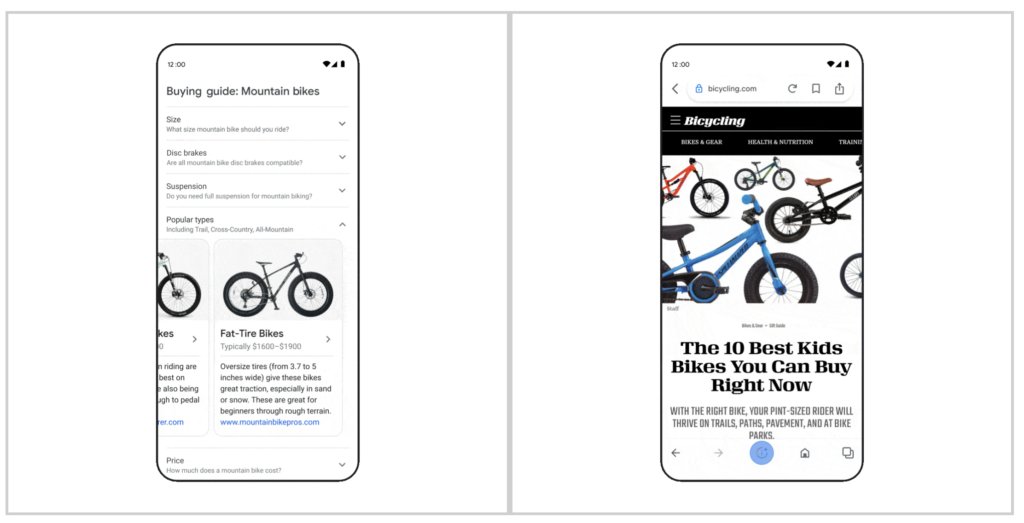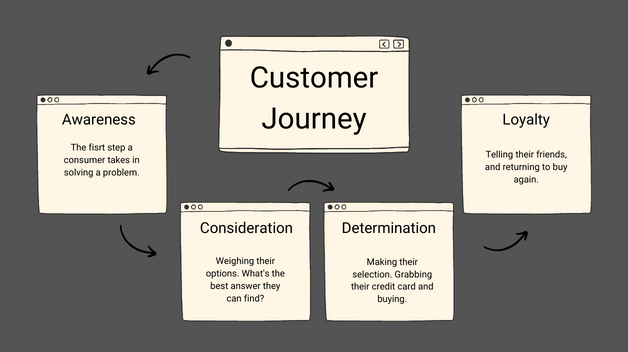If there’s one thing almost every e-commerce business can agree on, it’s that lowering customer acquisition costs is always a top priority.
Let’s take a look at some elements of SEO that don’t often get discussed. It can help you kickstart an organic growth marketing strategy for the future. We’ll also take a look at how you SHOULDN’T try to use SEO for growth, and level set your expectations.
Table of Contents
Changing to a Sales First SEO Strategy to Lower CAC
When it comes to optimizing an e-commerce site for organic search, almost every company follows the same tired strategy: ranking for their product titles.
For sure, getting found for your products is the end game, but that doesn’t mean that’s all we should be doing. Consider using your SEO titles for product pages to sell. You will likely convert higher when people make transactional searches, so here, we’re really looking to rank for “buy online” more so than just “”.
Further, utilize your meta descriptions to sell, rather than just spit out product features.
At Search On 2022, Google themselves made this distinction on how they will display results for shopping type queries, so we know it’s on their radar. The time to utilize SEO to sell is now, as it will help us show up in search more as Google moves more towards a full search/transactional journey in the SERPs (Search Engine Results Pages).
More organic conversions will lead to a lower cost of customer acquisition.
Aligning your SEO Goals with your Business Goals
When you’re designing, or even rethinking your enterprise e-commerce SEO strategy, it should start with one thing in mind: your overarching business goals.
While specific focus needs to be placed on ranking products and categories, you should also be thinking about owning the top of the funnel to collect marketing quality leads for your email, SMS and social media teams. These are also highly profitable channels, but they need the contact info and the followers to do their jobs effectively. Search can go a long way towards growing those lists when properly executed.
So an SEO content strategy needs to be in place that sets your company up as THE expert in your field. It’s likely that’s your business goal to begin with, so the alignment should be natural.
Some tactics to consider:
- Complete “how to” guides for using your products
- Definitive answers to common FAQs
- Pages dedicated to helping consumers make buying decisions about your products
- Pages that help people solve the problems your products are made to address
In short, you want to rank for the searches that help you achieve all of your desired business outcomes. That might not be every product in your catalog, or every piece of content you create.
Keep the SEO plan focused on the important ones. Reducing acquisition costs will follow.
Using SEO to Differentiate your Business
If you’re already utilizing the tactics we’ve discussed above, you’re already doing more than all but the best of your competition.
You can take it a step further by creating a search engine optimization strategy (and content marketing strategy) that is meant to resonate with your target audiences.
Consider a scenario where your products may be part of a broad category like jewelry, apparel, or auto parts etc. When we’re devising an SEO plan, we want to think very specifically about the people that want PRECISELY what we sell, and are going to FEEL GOOD buying it from us.
That will influence how we SOUND in our content. A well crafted SEO title for a page will speak specifically to your target audience, and get you the clicks and higher conversions rates.
It doesn’t matter if your keyword research tool tells you a generic, broad search has a hundred times the search volume of a highly specific search that’s likely to be used by your target demo. We want to rank for the terms that make our business sound like our business, and like our audience.
Make that emotional and logical connection with searchers and you’ll convert more, and reduce your customer acquisition costs.
The Role of SEO in the Customer Journey & Reducing Acquisition Costs
People do a lot of research these days ahead of making an e-commerce purchase. If you consider the Customer Journey Maps that Nimble helps create, there’s 5 steps overall, of which the first three are part and parcel of a solid customer acquisition SEO strategy.
- Awareness
- Consideration
- Acquisition/Determination
The last 2 are Service & Loyalty. SEO can play a role there as well, but we’ll leave that discussion for another time.
If we ignore the first two steps in our SEO strategy, we run the risk of either not acquiring the customer at all, or paying more for it by relying on Paid Search to be our only means of getting in front of those people.
So for example, let’s suppose we have a product that helps people start a campfire. To optimize for awareness, consideration and acquisition, it’s three distinct pieces of content:
- A blog/educational piece on “Easy Ways to Start a Campfire” for awareness.
- A landing page on “The Best Tools to Start a campfire You Can Buy Today” for consideration.
- The product page for our solution. That’s our acquisition piece.
We are looking to meet prospective buyers throughout the whole journey. If we collect their email or garner a social follow along the way, we’ve introduced multiple ways to lower the cost of acquiring that customer.
Read our Guide to SEO for the Customer Journey here.
Where Does SEO Start for D2C Manufacturers
(If you’re not making your own products, you can skip this part).
Manufacturers that market direct to consumers through an e-commerce site have a great starting point for SEO: What they name their product.
Traditionally we think of SEO as a website and marketing function, but product and brand managers can really assist here.
First, make sure you call the style and type of product the way most people usually refer to them. Getting cute or upscale may have worked for J. Peterman, but he didn’t rely on SEO to make sales. And we don’t do demand generation (easily) in SEO. More on that in a bit.
If you can work some SEO goodness into the product name as well, all the better. Think of a feature or benefit that’s highly searched, and work it into your product name. If you sell a blue bookbag, you can’t do better than naming it the “Schooldays Blue Bookbag”.
It might not be as catchy if you’re trying to become an Instagram darling, but it will work for search.
Who Should Be on the SEO Team?
Enterprise e-commerce companies likely have a dedicated SEO on staff, and they become the de facto team lead.
When it comes to building the overarching SEO strategy, they need input. And that input can’t all come from the marketing group. Your SEO team should include members from:
- Sales
- Merchandising
- Finance
- Customer Service
- IT (The website people)
- Marketing
To be sure, the extra folks on the team won’t be focused on SEO every day. They exist to “sanity check” where the SEO strategy is heading to make sure we’re optimizing on the right products that work well, sell well, are profitable and highly sought after. And the website people will be involved in the technical SEO functions, such as making sure your store is understandable by search engines.
Why SEO Isn’t the Channel for Demand Generation (Mostly)
The reason is simple. When people talk about e-commerce SEO, they are GENERALLY talking about optimizing product and category pages. Those pages have a very specific purpose, which is generally to SELL after the search. Emphasis: after the search.
Here’s what happens if we try to use SEO for a disruptive product that sort of defines its own, brand new category:
We can optimize for a product query, get it ranked, and then… nothing. If no one is searching for the product we’ve optimized for, we can’t get clicks. And therefore, we can’t generate demand.
More specifically, we should say product level SEO primarily fails for demand generation. But here’s what we can do.
We can optimize almost entirely for the Awareness phase we discussed above. Your e-commerce store will need to be content heavy, fully describing the problem your product solves, as well as all the reasons your product is the best solution.
So we can use SEO to get people into the funnel through education. We just can’t rely on optimizing our product pages alone to do that for us. Unless you want a really, really long product page.







